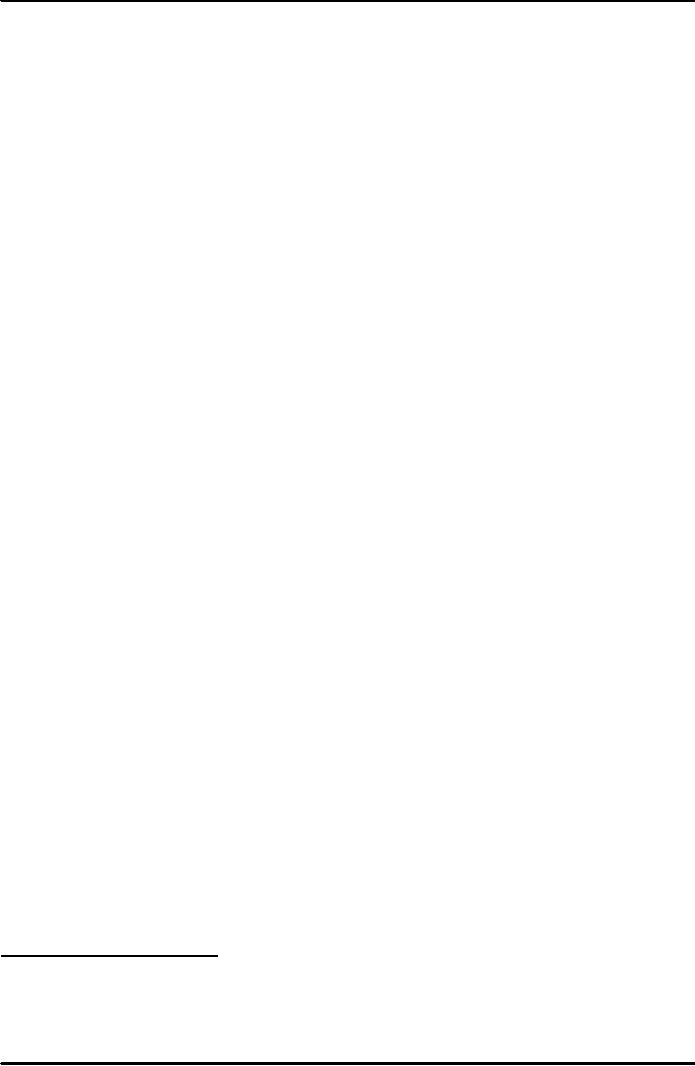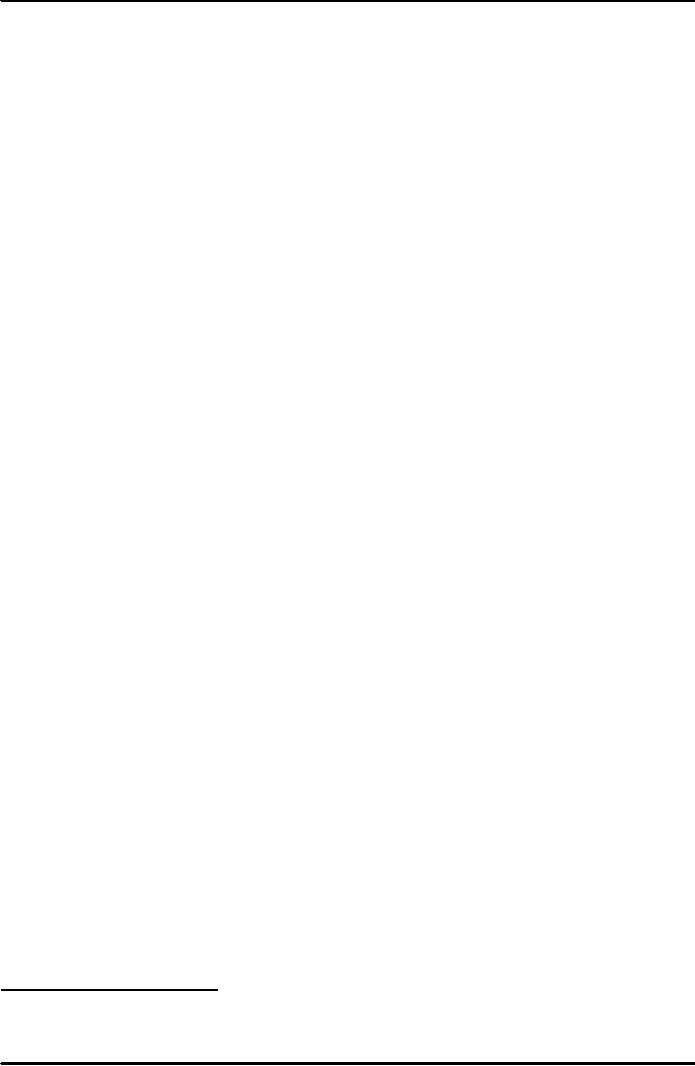 |
MONEY, CENTRAL BANKING AND MONETARY POLICY (CONTINUED…….) |
| << MONEY, CENTRAL BANKING AND MONETARY POLICY |
| JOINT EQUILIBRIUM IN THE MONEY AND GOODS MARKETS: THE IS-LM FRAMEWORK >> |

Introduction
to Economics ECO401
VU
Lesson
13.2
MONEY,
CENTRAL BANKING AND MONETARY
POLICY (CONTINUED.......)
Balance
Sheet of State
Bank:
Any
balance sheet has two
sides: assets and
liabilities, and the totals
of the two must
balance.
On
the assets side of SBP's
balance sheet, we have (1)
the country's foreign
exchange
reserves
(foreign currencies, gold
and silver reserves; either
held domestically or
invested
abroad);
(2) credit to government:
this would include any
SBP lending to
government,
including
in the form of any
outstanding (i.e. yet to
mature) treasury bonds and
bills lying with
the
SBP; and (3) credit to
banks: this would include
any advances (another name
for loans)
extended
by SBP to commercial banks. On
the liabilities side, we
have (4) notes and
coins in
circulation
(i.e. M0). Note that
for a currency-issuer (SBP in
our case), the currency is
a
liability,
not an asset; (5) government
or banks' deposits: these
would include any
positive
account6 balances held by commercial
banks and/or the government;
(6) outstanding
liquidity
paper
issued: this would include
any bills issued by the
central bank for the
purpose of
mopping
up liquidity from the
financial system.
Given
the accounting requirement of
(1)+(2)+(3)
= (4)+(5)+(6), we can
easily how any
increase
on
the LHS must be reflected by
an increase on the RHS.
However, only an increase in
(4) will
cause
the money supply (M2) to
expand.
Let's
simulate the
effect of an increase in (1),
caused by SBP's purchase of
dollars from the
foreign
exchange market. As we discussed
before, when the government
buys foreign
exchange,
it must inject an equivalent
amount of local currency
liquidity into the economy.
This
means
an increase in (4). Thus,
the size of balance sheet
grows symmetrically on both
sides.
Note,
however, that SBP could
technically issue liquidity
paper (6) to help sweep up
the
liquidity
it injected when purchasing
dollars from the market. If
this is done, then the
rise in (6)
will
be mirrored by a fall in (4)
and therefore the monetary
implications of the foreign
exchange
market
intervention would stand
neutralized. This process, by
which the increase in (4)
is
substituted
by an increase in (6) is called
sterilization, and is one of
the policies resorted to
by
countries
facing large foreign
exchange inflows while
maintaining a fixed exchange
rate.
This
point in the discussion
offers a natural launch pad
for defining the instruments
of
monetary
policy available to a central
bank. Earlier we talked
about monetary policy but
never
quite
got round to defining the
instruments thereof. Having
developed an idea of the
central
bank
balance sheet, this is now
straightforward to do.
Monetary
Policy and its
Instruments:
Monetary
policy can be defined as the
central bank's Programme,
often changing on a
daily
basis,
regarding the direct or
indirect control (through
interest rates) of monetary
conditions in
the
economy with a view to
managing aggregate demand
and inflation. There are
four major
instruments
of monetary policy:
I.
Reserve
ratio and SLRs: the
central bank can impose
and alter a mandatory
reserve
ratio
for commercial banks, and
through that, affect the
money multiplier. By
extension,
the
central bank can force
commercial banks to comply
with additional
statutory
liquidity
requirements (SLRs) that
work similarly to a the
reserve ratio. SLRs
require
commercial
banks to invest in a certain
quantity of T-bills and
T-bonds. Since a
large
stock
of these is often held by
the central bank as assets
(credit to government),
the
central
bank can use SLRs to
increase or run-down its
holding of this stock, and
thus
cause
M0 to increase or decrease
directly.
6
All
licensed commercial banks and
the government maintain accounts at
the central bank which
can be credited
(replenished)
or debited (depleted) depending on
the transaction. If a commercial bank
withdraws cash from
its
account
with the central bank
and lends that cash to
some firm operating in the
economy, then this
transaction
would
be a debit one, i.e., it
will cause deposits to fall.
You can predict the
effect on M0. Yes, it will
rise by the
same
amount.
143

Introduction
to Economics ECO401
VU
II.
Discount
rate: As mentioned
earlier, the central bank
sometimes extends credit
to
commercial
banks on their request to
meet their exigent liquidity
needs.7 Such
borrowing
is called borrowing from the
discount window and the
rate the central
bank
lends
at the discount window is
called the discount rate. If
the central bank
increases
this
rate, banks would be
inclined not to borrow from
the central bank and
instead keep
a
large reserve ratio as a
cushion against a possible
liquidity crunch. A higher
discount
rate
thus causes banks' voluntary
reserve ratio to increase
and the size of the
money
multiplier
to reduce.
III.
Open
market operations (OMOs):
Central
banks conduct OMOs on a
frequent basis.
An
OMO typically involves the
central bank buying or
selling government securities
(T-
bills
and bonds) to commercial
banks. As mentioned in i) above,
the central bank
can
build
or run-down its stock of
government securities and
affect M0. In contrast to i,
however,
it is not implemented as a mandatory
requirement, rather the
central bank
conducts
an OMO in auction style in which
all banks are free to
bid. The price of
the
securities
(and therefore the yield or
interest rate they offer) is
determined by the
degree
of interest in the auction. If
for instance, the central
bank wants to buy
securities
and there are very
few willing sellers, then
the sellers will demand a
higher
price
for the securities. This
will push the yield
(or return) on the
securities down. By
contrast,
if there were a large number
of willing sellers, they
would compete
ferociously
with
each other to sell their
stock to the central bank.
In this case, the
securities' prices
are
likely to be bid down, to
the advantage of the central
bank. In both cases,
however,
the
money supply will expand, as
the central bank injects
new currency into
the
economy
in exchange for the
securities. In the reverse
case, when the central
bank
sells
securities in the market,
the money supply
contracts.
IV.
Foreign
exchange market interventions:
As
discussed earlier in the
context of
balance
of payments, a purchase or sale of
foreign exchange by the
central bank has
an
ipso facto effect on the
money supply because
the central bank has to
pay local
currency
in order to buy the foreign
currency. In balance sheet
language, it can be
seen
that a central bank purchase
of foreign exchange, will
cause the bank's
foreign
exchange
reserves (item 1 on the
balance sheet) to increase.
Unless sterilized (by
issuing
central bank liquidity paper
or OMOs) such an increase
will cause an
increase
in
M0, which through a multiplier
effect causes M2 (or money
supply) to increase.
Functions
of Central Bank:
Let
us conclude our discussion
here with a word about
the functions of the central
bank.
Monetary
policy is just one of the
functions of the central
bank. There are at least
three more
functions
central banks serves:
a.
As lender of last resort, it
must bail (or help)
out commercial banks facing
temporary
liquidity
shortfalls;
b.
As supervisor of the financial
system, it must ensure its
good health by
monitoring
commercial
banks' lending (risk-taking),
capital adequacy, and
liquidity positions.
The
central
bank is also a monitor of
the management and
governance of financial
institutions
and of any other threats to
the stability of the
financial system;
c.
As the biggest intervener in
the foreign exchange market
(and/or setter of the
exchange
rate), it is responsible for
exchange rate policy and
the balance of
payments,
per
se.
Whether
the central bank fulfils
these functions independently
and autonomously or
under
instruction
by the government (Minster of
Finance) depends very much
on whether the
central
bank
is de facto autonomous or not. In
most HICs, central banks
enjoy a fair degree
of
autonomy
(and this is cited as one
reason for the stability of
their monetary and
financial
7
The
central bank is obliged to
provide such credit in its
capacity as lender
of last resort. Any
bank in trouble (i.e.
in
need of cash) can go to the
central bank discount window
and borrow. As such the
central bank provides
an
extra
cushion to the banking
system, whose stability is
essential for a smooth
payments system in the
economy.
144

Introduction
to Economics ECO401
VU
sectors)
but in LICs, governments
often intervene heavily in
the functions of the central
bank
preventing
it from achieving its
mandated objectives of financial
sector health, monetary
and
BOP
stability, and low
inflation.
Why
People Hold
Money:
We
can now move on to money
demand (denoted by Md or L),
and the question of why
people
hold
money? Economists have
identified three broad
motives:
a.
The
transactions motive: People
need to make day-to-day
transactions (buy
food,
clothes
etc.) and therefore need to
hold cash in their hands. Of
course, the
increasing
spread
of plastic money (credit
cards) has considerably
reduced the
transactions
incentive
for holding money. Assuming
no plastic money, an individual's
transactions
demand
for money is likely to
increase with his/her
income, as s/he is more
likely to
make
more transactions if he feels
richer.
b.
Precautionary
motive: In addition to
money held for making
transactions, people
sometimes
hold money for precautionary
purposes as well: i.e. to
meet any urgent or
unexpected
expenditure needs, or to "snatch a
bargain" that might be taken
by
someone
else. Again, precautionary
demand for money is likely
to increase with
income
c.
Assets
motive (also called
speculative or investments motive):
In
addition to a and
b,
people might wish to keep
some cash to switch between
various investments. So
consider
a person who owns some
land, holds some bonds,
and has some
stock
market
investments. Let's say he
spots a good investment
opportunity on the
stock
market
but doesn't have instant
buyers for the land or
bonds he holds. In this
situation
some
spare cash in hand would
have helped him acquire
the equity asset. The
assets
demand
for money is likely to
increase with income (for
reasons similar to those for
a
and
b) and decrease with
interest rates (because the
interest rate is the
opportunity
cost
of holding cash in your
hands).
Generally,
then, money demand Md
increases with income levels
and falls with interest
rates.
Note
that we refer to real income
(which measures purchasing
power) and real interest
rates
(which
measure real return on
invested money), and not
their nominal counterparts.
Thus the
demand
for money we refer to is the
demand for real money.
Contrast this with what
have
been
talking about earlier:
nominal money supply
i.e. what the central
bank controls through
its
various instruments. Whether
nominal and real money
supply are equal or not
depends
much
on the assumption regarding
prices. If prices are
assumed fixed, then the
two are equal,
otherwise
not.
145

Introduction
to Economics ECO401
VU
END
OF UNIT 13 - EXERCISES
Assume
that the government cuts
its expenditure and thereby
runs a public-sector
surplus.
a)
What will this do initially
to equilibrium national
income?
b)
What will it do to the
demand for money and
initially to interest
rates?
c)
Under what circumstances
will it lead to (i) a
decrease in money supply;
(ii) no
change
in money supply?
d)
What effect will (i)
and (ii) have on the
rate of interest compared
with its original
level?
a)
Injections will fall. The J
line would shift downwards,
causing a multiplied fall in
national
income.
b)
This will cause a reduced
transactions demand for
money. The L curve will
shift to the
left,
causing a fall in interest
rates.
c)
If the reduced expenditure
causes a reduction in government
borrowing from the
banking
sector
in such a way as to cause a
reduction in banks' liquidity,
there will be a
multiple
contraction
of credit. If, however, the
government simply reduces
the total number of
outstanding
bonds, then money supply
will be little
affected.
d)
If money supply is reduced,
then interest rates will
fall less than in (b)
above.
Would
it matter if it was easy to
forge a �10 note but
cost �15 to do
so?
No.
It would not be `profitable'
for forgers to produce such
notes.
Why
may money prices give a poor
indication of the value of
goods and
services?
�
Money
prices may be distorted by
monopoly power.
�
They
ignore externalities.
�
Simply
adding up the money incomes
of individuals in order to get a
measure of their
total
incomes
ignores questions of the
distribution of income.
�
The
value of money is eroded
over time by inflation. Thus
nominal prices would have to
be
converted
to real prices in order to
compare the values of goods
at different points in
time.
What
effects do debit cards and
cash machines (ATMs) have on
(a) banks'
prudent
liquidity
ratios; (b) the size of
the bank
multiplier?
Debit
cards: (a) Reduce it (there
is less need for cash);
(b) Increase it (the
liquidity ratio is
smaller).
Cash
machines: (a) Increase it
(there is a greater need for
cash); (b) Reduce it (the
cash ratio is
larger).
If
the government borrows but
does not spend the
proceeds, what effect will
this have on
the
money supply if it borrows
from (a) the banking
sector; (b) the non-bank
private
sector?
a)
Little or no effect, if it simply
replaces one liquid asset by
another; but reduce it, if
it
involves
reducing the liquidity of
the banking sector (e.g. by
the sale of bonds).
b)
Reduce it. The liquidity of
the banking sector will be
reduced (when people pay
for the
securities
with cash withdrawn from
the banks, or cheques drawn
on the banks).
Under
what circumstances are
cheques more efficient than
cash and vice versa?
Would
you
get the same answer
from everyone involved in
transactions: individuals, firms
and
banks?
Cheques
are more efficient than
cash for large transactions,
or when there is a danger of
theft of
the
cash. Cheques are less
efficient than cash for
small transactions: these
have a low value
146

Introduction
to Economics ECO401
VU
relative
to the cost of processing a
cheque; also cash
transactions are quicker
than transactions
by
cheque.
The
above points apply
generally, but sometimes,
what may be in the interests
of one party to a
transaction
may not be in the interests
of the other(s). For
example, a shop may prefer
to
receive
cash on occasions where it is
more convenient for a
customer to write out a
cheque
(because
that saves a visit to the
bank or cash
machine).
Buying
something like a car is at
the other end of the
spectrum from holding cash.
A car
is
highly illiquid, but yields
a high return to the owner.
In what form is this
`return'?
The
utility per period of time
from using it.
Would
the demand for securities be
low if their price was
high, but was expected to go
on
rising?
No.
The demand would be high.
People would want to hold
the securities, so that they
could
benefit
from the anticipated capital
gain.
Which
way is the L (money demand)
curve likely to shift in the
following cases?
a)
The balance of trade moves
into deficit.
b)
People anticipate that
foreign interest rates are
likely to rise relative to
domestic
ones.
c)
The domestic rate of
inflation falls below that
of other major trading
countries.
d)
People believe that the
rupee is about to
depreciate.
a)
To the left. A deficit on
the balance of trade will
cause the exchange rate to
depreciate.
People,
anticipating this, will want
to hold smaller rupee
balances.
b)
To the left. People will
want to switch to holding
the other currencies where
interest rates
are
expected to rise.
c)
To the right. People will
expect an appreciation of the
rupee as the lower
inflation
causes
the balance of payments to
move into surplus. They
will therefore want to
hold
larger
rupee balances.
d)
To the left.
Trace
through the effects on the
foreign exchange market of a
fall in the money
supply.
�
The
shortage of money balances
will lead to a reduction in
the purchase of foreign
assets
and
hence a reduction in the
supply of the domestic
currency on the foreign
exchange
market.
�
The
fall in money supply can be
represented by a leftward shift in
the Ms curve.
This will
cause
a rise in the rate of
interest.
�
The
higher rate of interest will
lead to a reduction in the
supply of the domestic
currency on
the
foreign exchange market as
people prefer to keep their
deposits within the
country
and
earn the higher rate of
interest. This effect will
reinforce the first
effect.
�
The
higher rate of interest will
also increase the demand
for the domestic currency on
the
foreign
exchange market as people
abroad deposit more in this
country to take
advantage
of the higher interest
rate.
�
The
increased demand for and
reduced supply of the
domestic currency will cause
the
exchange
rate to appreciate. This
effect will be reinforced by
speculation.
What
effect would a substantial
increase in the sale of
government bonds and
Treasury
bills
have on interest
rates?
It
would drive them up. In
order to sell the extra
bills, the government would
have to accept a
lower
discount price (a higher
rate of discount). In order to
sell the extra bonds,
governments
would
have to offer them at a
higher rate of interest, or at a
lower price for a given
interest
147

Introduction
to Economics ECO401
VU
payment
(which amounts to a rise in
the interest rate).
These higher rates of
interest on
government
securities would have a
knock-on effect on other
rates of interest.
If
banks choose to operate a 20
per cent liquidity ratio
and receive extra cash
deposits of
Rs.10
million:
a)
How much credit will
ultimately be created?
b)
By how much will total
deposits have
expanded?
c)
What is the size of the
bank multiplier?
a)
Rs. 40m
b)
Rs. 50m
c)
5 (= 1/0.2)
If
banks operated a rigid 5 per
cent cash ratio and
the government reduced the
supply of
cash
by Rs.1 million, how much
must credit contract? What
is the money
multiplier?
Assuming
that this resulted in Rs.1
million less cash being
held in the banking system
(i.e. that
the
proportion of cash in circulation
did not fall), then
credit must contract by
Rs.19 million, giving
an
overall reduction in money
supply of Rs.20 million (of
which the Rs.1 million
cash is 5 per
cent).
The money multiplier is
therefore 20 (i.e.
1/5%).
Explain
how open-market operations
could be used to increase
the money supply.
The
central bank could buy
back bonds from the
banking system before they
reached maturity.
The
banks' balances in the
central bank would be
credited, allowing the banks
to create more
credit.
Why
would it be difficult for a
central bank to predict the
precise effect on money
supply
of
open-market operations?
a)
Banks may vary their
liquidity ratio.
b)
It is difficult to predict how
much the holding of Treasury
bills by the banks will
vary, and
how
much the banks will
take this into account
when deciding how much
credit to grant.
Assume
that the central bank of UK
(called the Bank of England)
wants to reduce
interest
rates.
Trace through the process
during the day by which it
achieves this.
The
BoE's Monetary Policy
Committee will announce a
reduction in the rate of
interest. BoE will
then
conduct open market
operations to back this up.
This will entail making
more liquidity
available
to banks through gilt repos.
Assuming that the reduction
in the rate of interest
was
announced
the previous day, then
early in the morning the
BoE will forecast the
day's shortage
of
liquidity in the banking
system (at the new
lower interest rate) and
will offer assistance
to
banks
through repos and
rediscounting in order to meet
the shortfall. By making
additional
assistance
available at further points
during the day, the
Bank can adjust liquidity as
necessary
to
maintain the rate of
interest at the new
level.
In
what ways is the US Fed's
operation of monetary policy
(a) similar to and (b)
different
from
the Bank of
England's?
a)
The Fed, like the
Bank of England, uses open
market operations to influence
the money
supply
and thereby to make the
announced discount rate the
equilibrium rate. If
the
discount
rate is raised (just as when
the Monetary Policy
Committee of the bank
of
England
raises the rate of interest)
then open market sales of
bands and Treasury
bills
are
used to back this
up.
b)
Unlike the Bank of England,
however, the Fed also
from time to time alters
the minimum
reserve
ratio as a means of influencing
bank lending.
148

Introduction
to Economics ECO401
VU
If
the Bank of England issues
�1 million of extra bonds
and buys back �1 million
of
Treasury
bills, will there
automatically be a reduction in credit by
a set multiple of �1
million?
No.
It depends on the proportion of
the �1 million of bills that
were held by the banks
(since only
by
reducing these will there be
a reduction in banks' liquidity). It
also depends on
banks'
willingness
to vary their liquidity
ratio. Finally, it depends on
banks' use of repo
and
rediscounting
facilities available through
the Bank of England (if
these are used by the
banks as
a
means of maintaining short-run
liquidity, there is less
pressure on them to reduce
credit).
Trace
through the effects of a
squeeze on the monetary base
from an initial reduction
in
cash,
to banks' liquidity being
restored by the rediscounting of
bills. Will this
restoration
of
liquidity by the Bank of
England totally nullify the
initial effect of reducing
the supply of
cash?
(Clue: what is likely to
happen to the rate of
interest?)
Banks,
short of cash, will, in the
last resort, acquire money
from the Bank of England
through gilt
repos
or the rediscounting of bills.
But the Bank of England
will only do this at a penal
rate,
thereby
driving up interest rates
(to its announced level,
assuming that it has raised
the rate of
interest)
and thereby reducing the
demand for money, and
hence the quantity of credit
supplied.
If
the central bank wanted to
achieve a lower rate of
inflation and also a higher
exchange
rate,
could it under these
circumstances rely simply on
the one instrument of
interest
rates?
A
higher interest rate would
help both to reduce
inflation and push up the
exchange rate. The
problem
is that the desired
magnitude of these effects
may require a different
sized increase in
interest
rates. If this were the
case, then again relying on
one instrument alone would
not be
sufficient.
Why
does an unstable demand for
money make it difficult to
control the supply
of
money?
Because
the supply of money depends
in part on the demand for
money.
Assuming
that real national output,
Q, rises each year as a
result of increases in
productivity,
can money supply rise
without causing inflation?
Would this destroy
the
validity
of the quantity
theory?
Yes.
If V does not change, then
for every one per
cent that output (Q)
rises, so M can also
rise
by
one per cent without
causing the price level
(P) to rise.
This
does not destroy the
validity of the quantity
theory. Although the theory
states that changes
in
money supply will not
cause changes in output, it
still allows for changes in
output occurring
independently
of changes in money supply, in
which case there can be an
accommodating rise
in
the money supply without it
being inflationary.
Could
production and consumption
take place without money? If
you think they
could,
give
examples.
Yes.
People could produce things
for their own consumption.
For example, people could
grow
vegetables
in their garden or allotment;
they could do their own
painting and
decorating.
Alternatively
people could engage in
barter: they could produce
things and then swap
them for
goods
that other people had
produced.
If
we would all like more
money, why does the
government not print a lot
more? Could it
not
thereby solve the problem of
scarcity `at a
stroke'?
The
problem of scarcity is one of a
lack of production. Simply
printing more money
without
producing
more goods and services
will merely lead to
inflation. To the extent
that firms cannot
meet
the extra demand (i.e.
the extra consumer
expenditure) by extra production,
they will
149

Introduction
to Economics ECO401
VU
respond
by putting up their prices.
Without extra production,
consumers will end up unable
to
buy
any more than
previously.
What
do you know about the
leads and lags associated of
monetary and fiscal
policy?
Lead
time, or the minimum time
the government needs before
invoking the policy. This
is
obviously
negligible for monetary
policy, as the central bank
can instantly take action to
affect
money
supply (either through
direct or indirect means).
Lead times for fiscal
policy invocation,
however,
can be quite substantial.
Consider an economy where
aggregate demand falls
in
September,
and the next budget is
not due till June
the following year. Here
fiscal policy
requires
a
lead time of about 9 months!
(a long enough time period
for demand conditions to
have
changed
or evern reversed).
Lag
time, or the time period
taken for a policy change to
have an impact, is quite
small for fiscal
policy.
Thus an increase in taxes
will usually have an
immediate demand-dampening effect,
as
consumers
feel the pinch on their
disposable income. By contrast, a
change in the money
supply
takes
a long time to have a demand
impact. This is because the
credit/investment channel
for
monetary
policy transmission takes
about two years to act.
For e.g., if money is
tightened today
and
interest rates rise, firms'
response will be reflected in
lower investment outlays in
about two
years'
time. The projects already
underway or likely to come
online inside two years
cannot
usually
be reversed and hence
current investment spending
will remain
unaffected.
150
Table of Contents:
- INTRODUCTION TO ECONOMICS:Economic Systems
- INTRODUCTION TO ECONOMICS (CONTINUED………):Opportunity Cost
- DEMAND, SUPPLY AND EQUILIBRIUM:Goods Market and Factors Market
- DEMAND, SUPPLY AND EQUILIBRIUM (CONTINUED……..)
- DEMAND, SUPPLY AND EQUILIBRIUM (CONTINUED……..):Equilibrium
- ELASTICITIES:Price Elasticity of Demand, Point Elasticity, Arc Elasticity
- ELASTICITIES (CONTINUED………….):Total revenue and Elasticity
- ELASTICITIES (CONTINUED………….):Short Run and Long Run, Incidence of Taxation
- BACKGROUND TO DEMAND/CONSUMPTION:CONSUMER BEHAVIOR
- BACKGROUND TO DEMAND/CONSUMPTION (CONTINUED…………….)
- BACKGROUND TO DEMAND/CONSUMPTION (CONTINUED…………….)The Indifference Curve Approach
- BACKGROUND TO DEMAND/CONSUMPTION (CONTINUED…………….):Normal Goods and Giffen Good
- BACKGROUND TO SUPPLY/COSTS:PRODUCTIVE THEORY
- BACKGROUND TO SUPPLY/COSTS (CONTINUED…………..):The Scale of Production
- BACKGROUND TO SUPPLY/COSTS (CONTINUED…………..):Isoquant
- BACKGROUND TO SUPPLY/COSTS (CONTINUED…………..):COSTS
- BACKGROUND TO SUPPLY/COSTS (CONTINUED…………..):REVENUES
- BACKGROUND TO SUPPLY/COSTS (CONTINUED…………..):PROFIT MAXIMISATION
- MARKET STRUCTURES:PERFECT COMPETITION, Allocative efficiency
- MARKET STRUCTURES (CONTINUED………..):MONOPOLY
- MARKET STRUCTURES (CONTINUED………..):PRICE DISCRIMINATION
- MARKET STRUCTURES (CONTINUED………..):OLIGOPOLY
- SELECTED ISSUES IN MICROECONOMICS:WELFARE ECONOMICS
- SELECTED ISSUES IN MICROECONOMICS (CONTINUED……………)
- INTRODUCTION TO MACROECONOMICS:Price Level and its Effects:
- INTRODUCTION TO MACROECONOMICS (CONTINUED………..)
- INTRODUCTION TO MACROECONOMICS (CONTINUED………..):The Monetarist School
- THE USE OF MACROECONOMIC DATA, AND THE DEFINITION AND ACCOUNTING OF NATIONAL INCOME
- THE USE OF MACROECONOMIC DATA, AND THE DEFINITION AND ACCOUNTING OF NATIONAL INCOME (CONTINUED……………..)
- MACROECONOMIC EQUILIBRIUM & VARIABLES; THE DETERMINATION OF EQUILIBRIUM INCOME
- MACROECONOMIC EQUILIBRIUM & VARIABLES; THE DETERMINATION OF EQUILIBRIUM INCOME (CONTINUED………..)
- MACROECONOMIC EQUILIBRIUM & VARIABLES; THE DETERMINATION OF EQUILIBRIUM INCOME (CONTINUED………..):The Accelerator
- THE FOUR BIG MACROECONOMIC ISSUES AND THEIR INTER-RELATIONSHIPS
- THE FOUR BIG MACROECONOMIC ISSUES AND THEIR INTER-RELATIONSHIPS (CONTINUED…….)
- THE FOUR BIG MACROECONOMIC ISSUES AND THEIR INTER-RELATIONSHIPS (CONTINUED…….):Causes of Inflation
- THE FOUR BIG MACROECONOMIC ISSUES AND THEIR INTER-RELATIONSHIPS (CONTINUED…….):BALANCE OF PAYMENTS
- THE FOUR BIG MACROECONOMIC ISSUES AND THEIR INTER-RELATIONSHIPS (CONTINUED…….):GROWTH
- THE FOUR BIG MACROECONOMIC ISSUES AND THEIR INTER-RELATIONSHIPS (CONTINUED…….):Land
- THE FOUR BIG MACROECONOMIC ISSUES AND THEIR INTER-RELATIONSHIPS (CONTINUED…….):Growth-inflation
- FISCAL POLICY AND TAXATION:Budget Deficit, Budget Surplus and Balanced Budget
- MONEY, CENTRAL BANKING AND MONETARY POLICY
- MONEY, CENTRAL BANKING AND MONETARY POLICY (CONTINUED…….)
- JOINT EQUILIBRIUM IN THE MONEY AND GOODS MARKETS: THE IS-LM FRAMEWORK
- AN INTRODUCTION TO INTERNATIONAL TRADE AND FINANCE
- PROBLEMS OF LOWER INCOME COUNTRIES:Poverty trap theories: